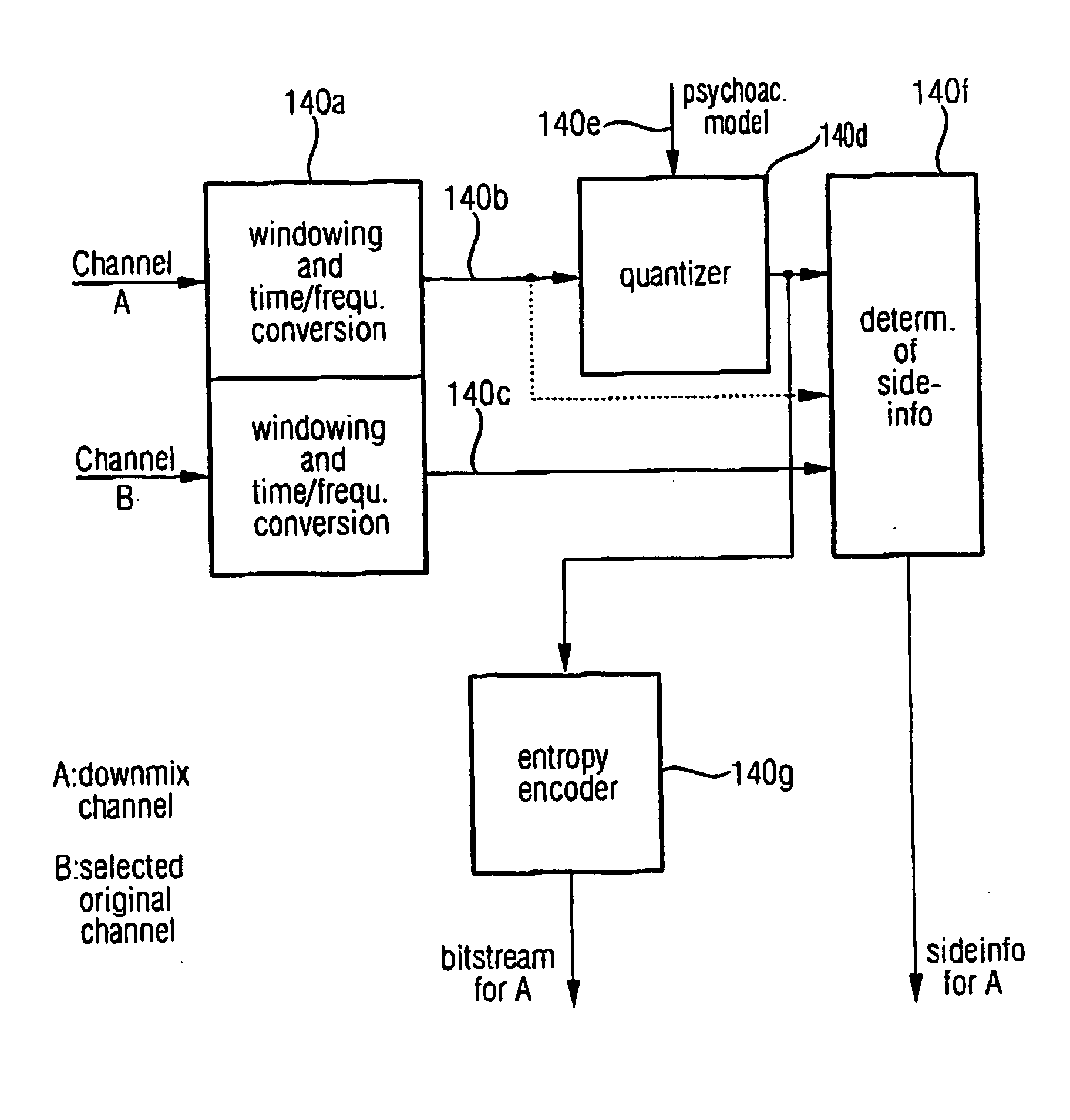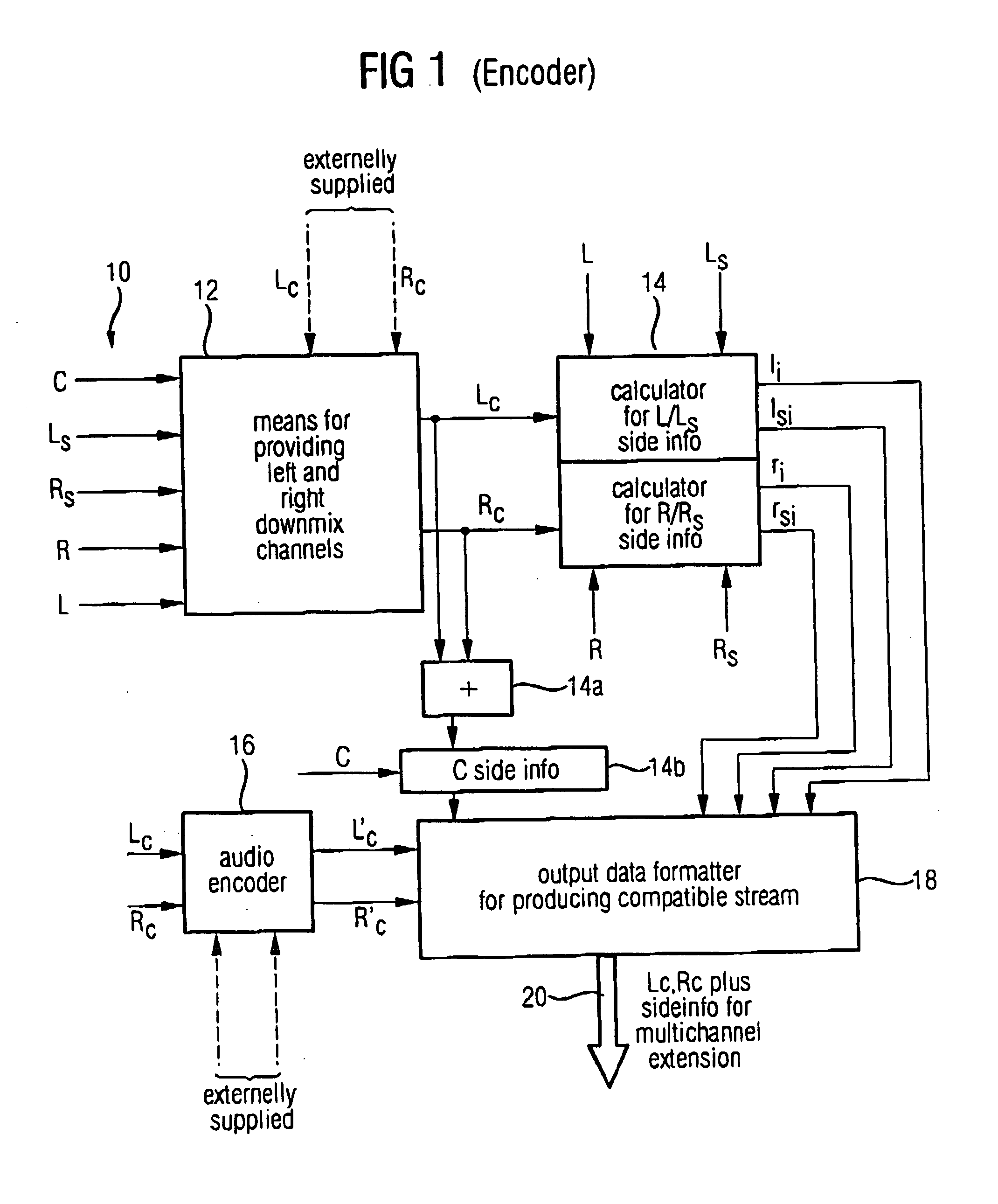Compatible multi-channel coding/decoding
a multi-channel audio and coding technology, applied in the field of audio signal processing methods and multi-channel audio signals, can solve the problems of not always true for real stereophonic production techniques, unable to process parametric data for generating one or more approximations, and reconstruction by dematrixing
- Summary
- Abstract
- Description
- Claims
- Application Information
AI Technical Summary
Benefits of technology
Problems solved by technology
Method used
Image
Examples
Embodiment Construction
FIG. 1 shows an apparatus for processing a multi-channel audio signal 10 having at least three original channels such as R, L and C. Preferably, the original audio signal has more than three channels, such as five channels in the surround environment, which is illustrated in FIG. 1. The five channels are the left channel L, the right channel R, the center channel C, the left surround channel Ls and the right surround channel Rs. The inventive apparatus includes means 12 for providing a first downmix channel Lc and a second downmix channel Rc, the first and the second downmix channels being derived from the original channels. For deriving the downmix channels from the original channels, there exist several possibilities. One possibility is to derive the downmix channels Lc and Rc by means of matrixing the original channels using a matrixing operation as illustrated in FIG. 6. This matrixing operation is performed in the time domain.
The matrixing parameters a, b and t are selected su...
PUM
 Login to View More
Login to View More Abstract
Description
Claims
Application Information
 Login to View More
Login to View More - R&D
- Intellectual Property
- Life Sciences
- Materials
- Tech Scout
- Unparalleled Data Quality
- Higher Quality Content
- 60% Fewer Hallucinations
Browse by: Latest US Patents, China's latest patents, Technical Efficacy Thesaurus, Application Domain, Technology Topic, Popular Technical Reports.
© 2025 PatSnap. All rights reserved.Legal|Privacy policy|Modern Slavery Act Transparency Statement|Sitemap|About US| Contact US: help@patsnap.com



